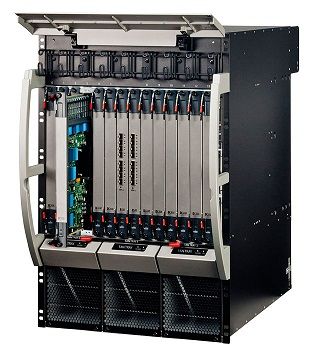Cable-Tec Expo: Arris Points High-Density CMTS Toward CCAP Target

Arris Group will give the cable-technology world a look at the E6000 -- its next-generation cable-modem termination system, which the vendor says will support CableLabs’ Converged Cable Access Platform headend spec at some point hence -- at this week’s 2012 Cable-Tec Expo.
The E6000 Converged Edge Router in the first release will support up to 256 downstream channels on each of up to seven cards in a single 16-rack-unit chassis, for a total of 1,792 per chassis, according to Arris chief technology officer of network solutions Tom Cloonan. Each line card supports up to 96 upstream channels.
“It’s a very high-density platform, with lots of RF spigots and lots of channels,” Cloonan said.
Arris is aiming for general-availability release of the E6000 CER in the first quarter of 2013. The CMTS has been in trials with at least five large MSOs worldwide for the last year, with more trials expected to commence in fourth quarter of this year. Cloonan declined to identify the operators kicking the tires on the E6000; Comcast and Time Warner Cable are Arris’s two largest customers.
CableLabs' CCAP integrates the functions of broadcast and narrowcast QAMs and DOCSIS 3.0 interfaces to gain operational efficiencies. The spec, announced in June 2011, synthesizes previous headend-consolidation projects that were under way at Comcast and TWC.
In the first release, the E6000 will not support universal edge QAM functionality, as called for by CCAP, or other capabilities such as support for passive optical network (PON) interfaces. Arris will take the edge QAM features of the Media Services Platform, which it obtained through the acquisition of BigBand Networks last year, and incorporate those into the E6000, according to Cloonan.
“The CCAP spec gives goals, and the MSP will be augmenting [the E6000] moving forward,” Cloonan said. “The goals and objectives of the CCAP spec will be achieved.”
Multichannel Newsletter
The smarter way to stay on top of the multichannel video marketplace. Sign up below.
Other vendors driving toward hitting the CCAP mark include Casa Systems, Cisco Systems, CommScope, Motorola Mobility and Harmonic.
Arris pulled in high-availability features of the C4, its flagship CMTS platform for the last 10 years, and increased densities while also lowering power per downstream channel, Cloonan said.
Like the C4, the E6000 has a fully redundant design that promises 99.999% uptime. The CMTS has no single point of failure, hitless fail-over and hot-swapping of cards, and also is field-deployment ready for IPv6, according to Arris.
Until the E6000 is fully CCAP-compliant, MSOs will be able to mix and match it with Arris’s MSP and C4. That “aligns with how the MSOs are set up operationally,” Cloonan said. “Over time we will move into CCAP in its full glory, but it’s an evolution.”
Also at Cable-Tec Expo, Arris will show off new features of the C4 CMTS with the version 8.1 software release. Those include support for 16- and 24-channel bonding on the downstream side. The vendor also is introducing TouchStone cable modems and gateways capable of 16- and 24-channel bonding.
“MSOs are going to start to push beyond the four or eight [bonded downstream] channels they do today,” Cloonan said.
Cloonan declined to provide details on the E6000’s backplane-switching speed. “Different vendors are going to be battling [in the CMTS market], and they want to surprise their competitors at some future time,” he said, adding that digital signal processing chips are expected to continue to increase performance over time.
“It’s a chassis we expect to be out in the field for the next decade,” Cloonan said.
